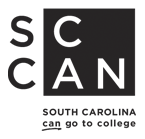INTRO
When it comes to searching for colleges, there are several things to consider — and a variety of institutions right here in South Carolina. Whether narrowing down choices based on class size, degrees offered, location or cost, it’s best to pick schools that offer the best overall combination of features.
The first path to choose is whether to pursue a 2-year or 4-year education.
2-YEAR
2-year schools, like junior, community and technical colleges, act as bridges between high school and 4-year college, offering transfer credit toward a bachelor’s degree. Many of these 2-year programs also offer certificates and associate’s degrees, which can translate directly into a specific career path or be applied to a 4-year degree down the road.
Benefits of a 2-year school include flexible scheduling (even night courses), lower cost, smaller class size and the opportunity to begin a university track, where students can enroll at a 4-year school and begin taking courses before transferring there.
4-YEAR
4-year schools offer specialized studies, with graduates finishing with a bachelor’s degree. Benefits of a 4-year school include the opportunity to pursue graduate study programs (where students can work toward higher degrees like a master’s) and more course and activity choices. Depending on opportunities for study-abroad travel or internships, it may take more or less than 4 years to complete a degree at these colleges.
A school’s public or private status is another important factor to consider.
Public or private status can make a major difference both in cost and size, with publicly funded colleges and universities tending to be larger and less expensive to attend — and least expensive for in-state residents. Private schools depend on donations and fundraising from graduates and boosters, so their tuitions tend to run higher to make up for the lack of taxpayer funding.
The smaller size of a private college may be more comfortable for a student coming from a smaller high school, where there were fewer students per class and more individual attention from teachers. However, a larger public school may offer more extracurricular opportunities, like a larger variety of fraternities, sororities, academic clubs and service groups.
When you’re ready to start narrowing down college choices, check out our College Compass tool. Search by any combination of factors and get a list of schools that match the profile you chose. Click here to get started.

